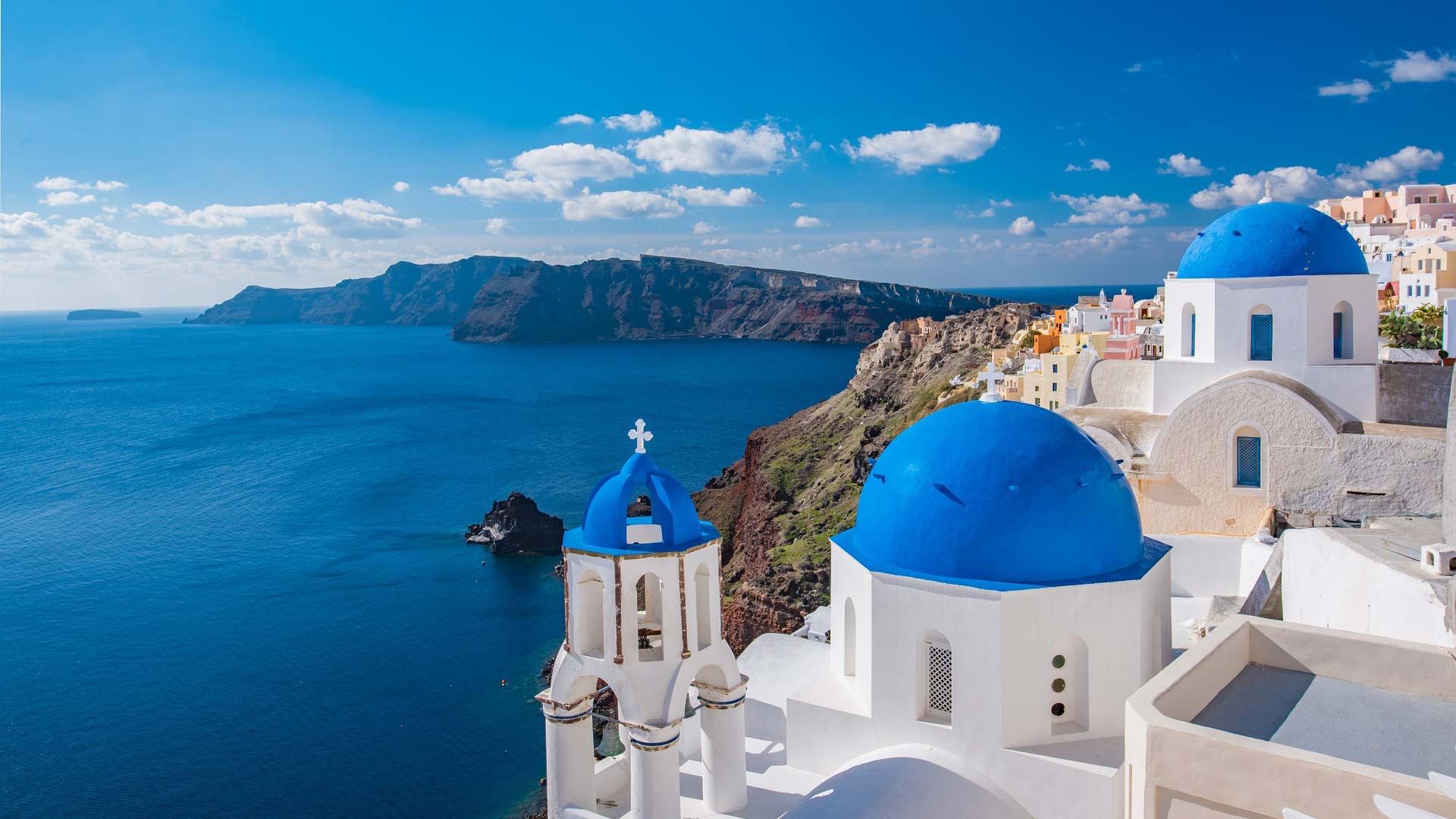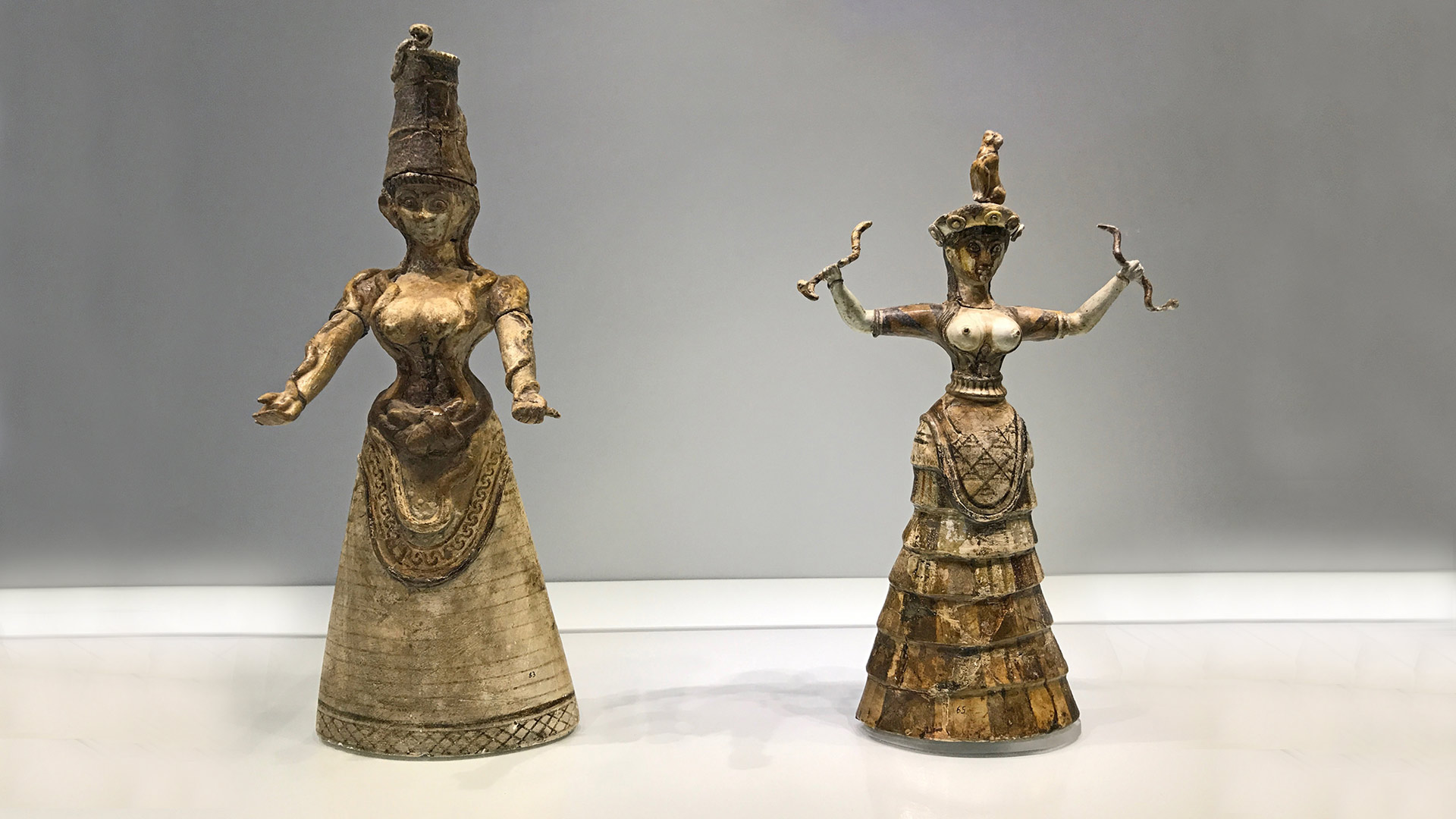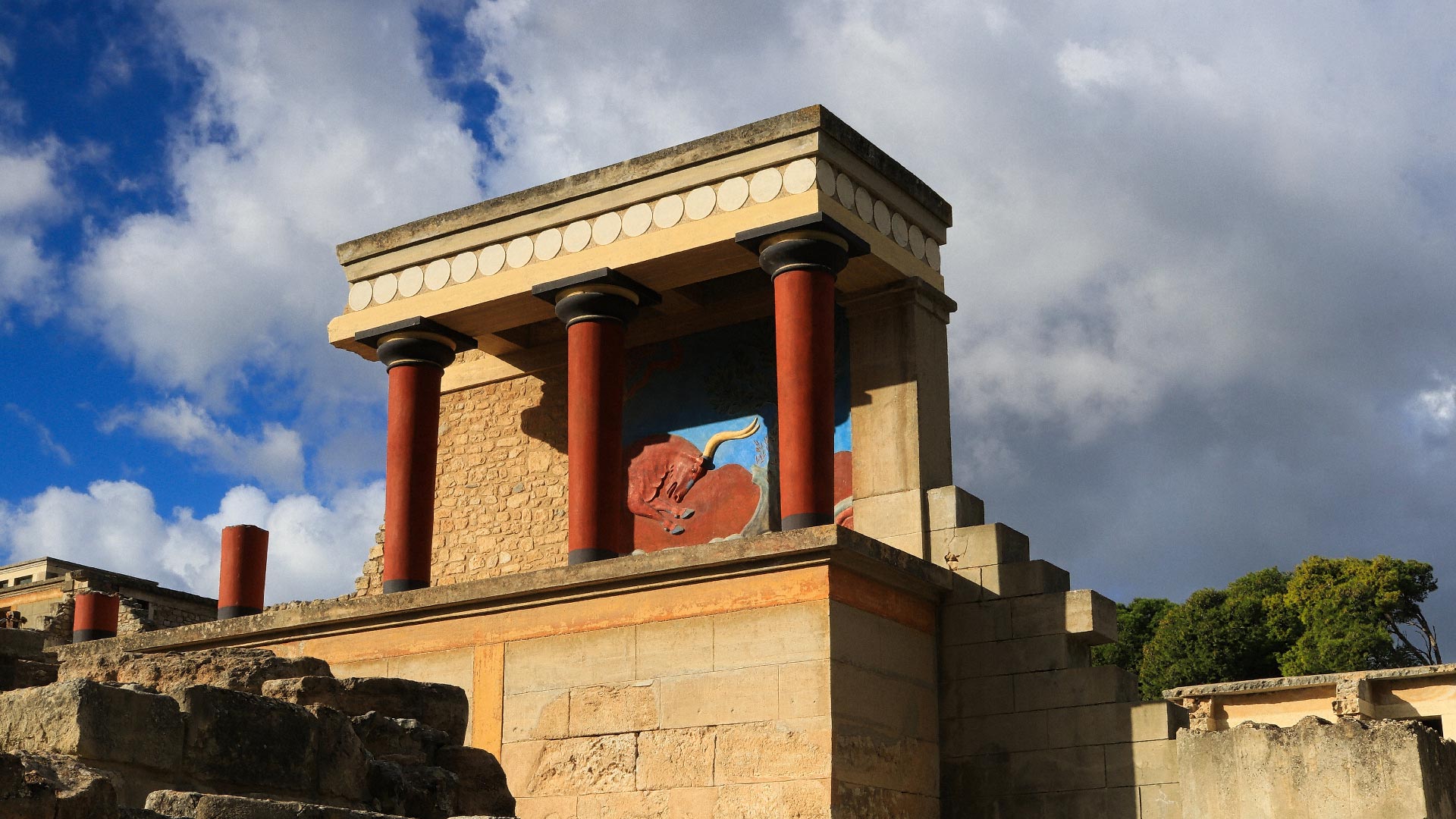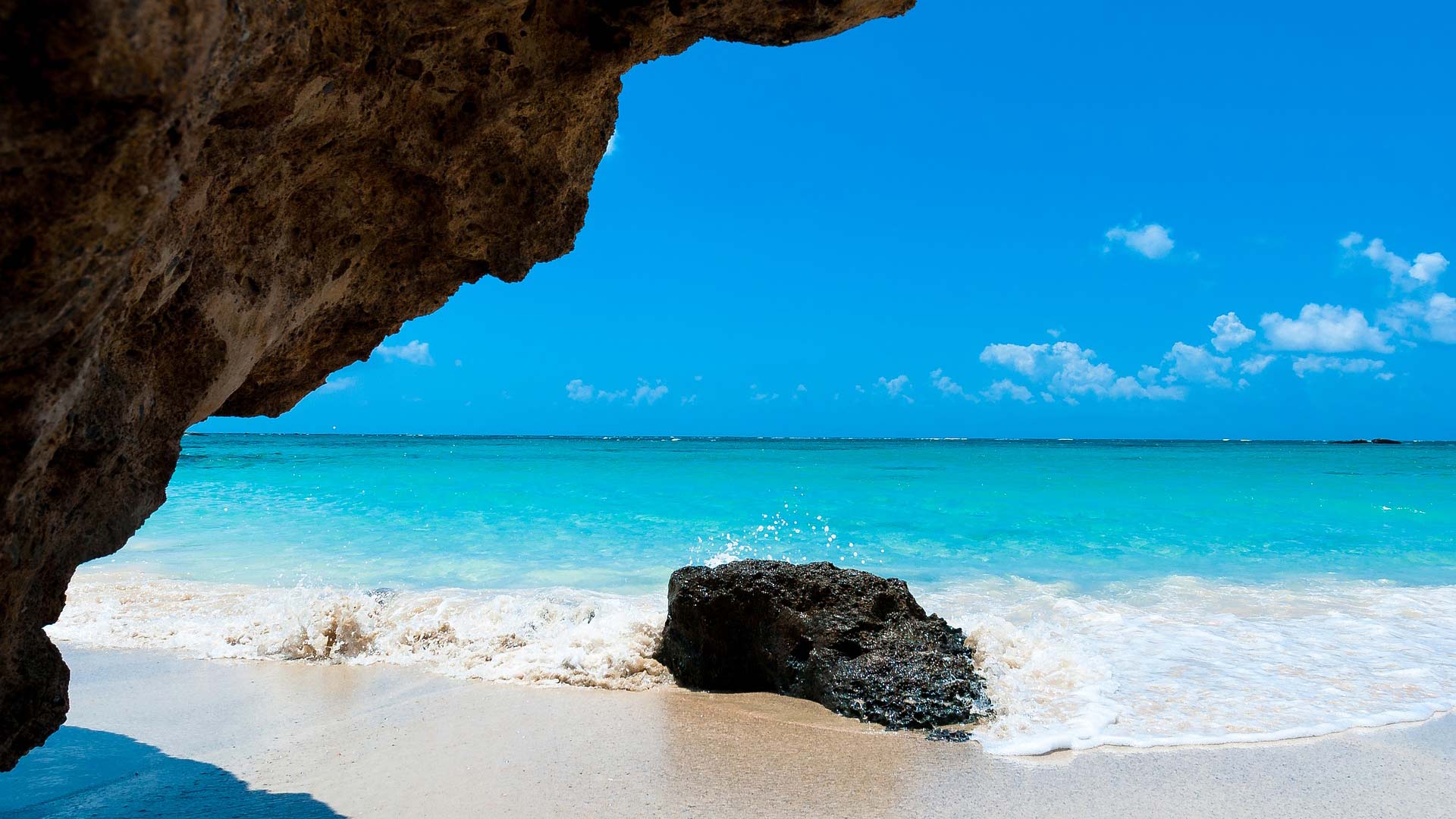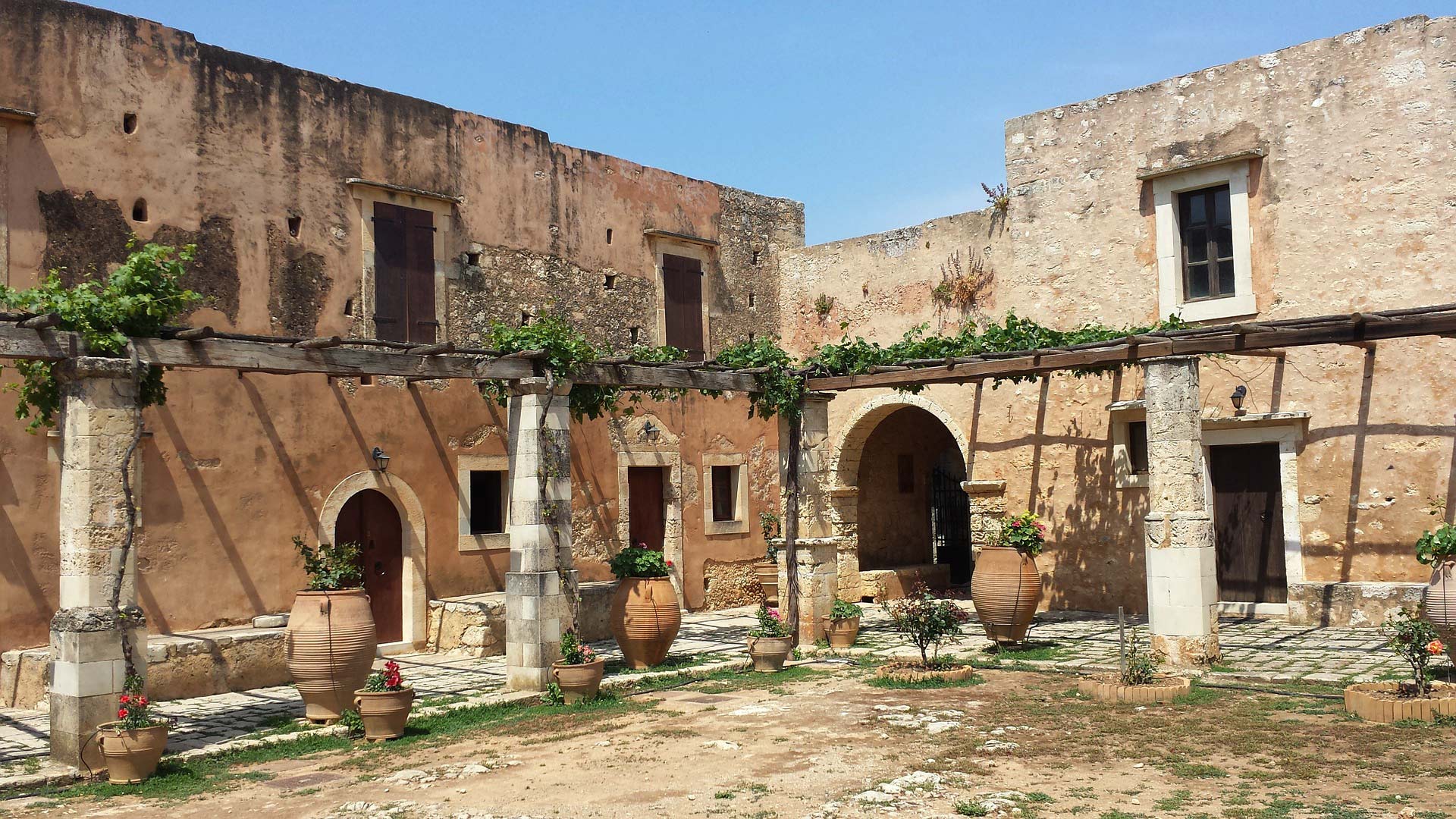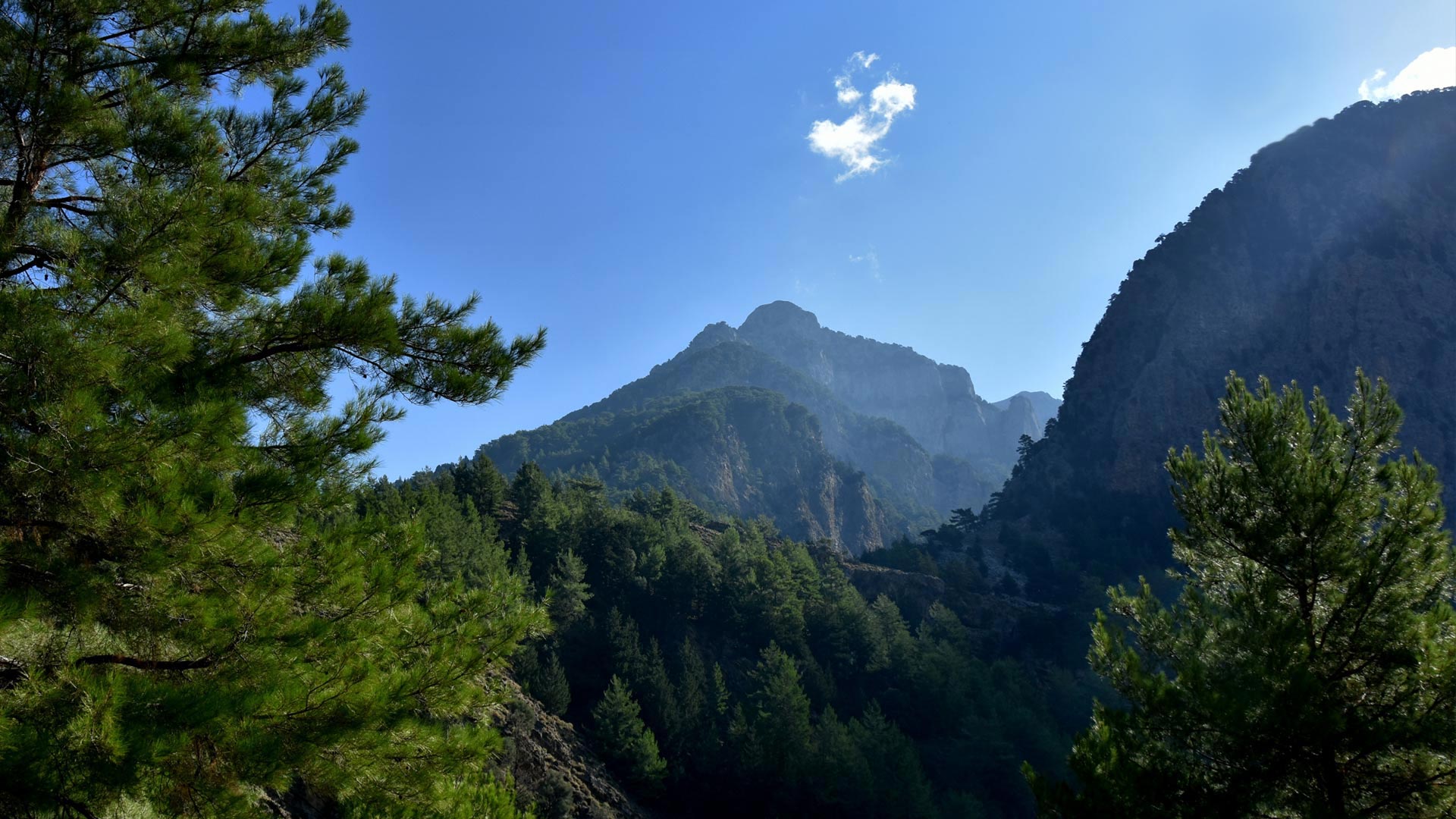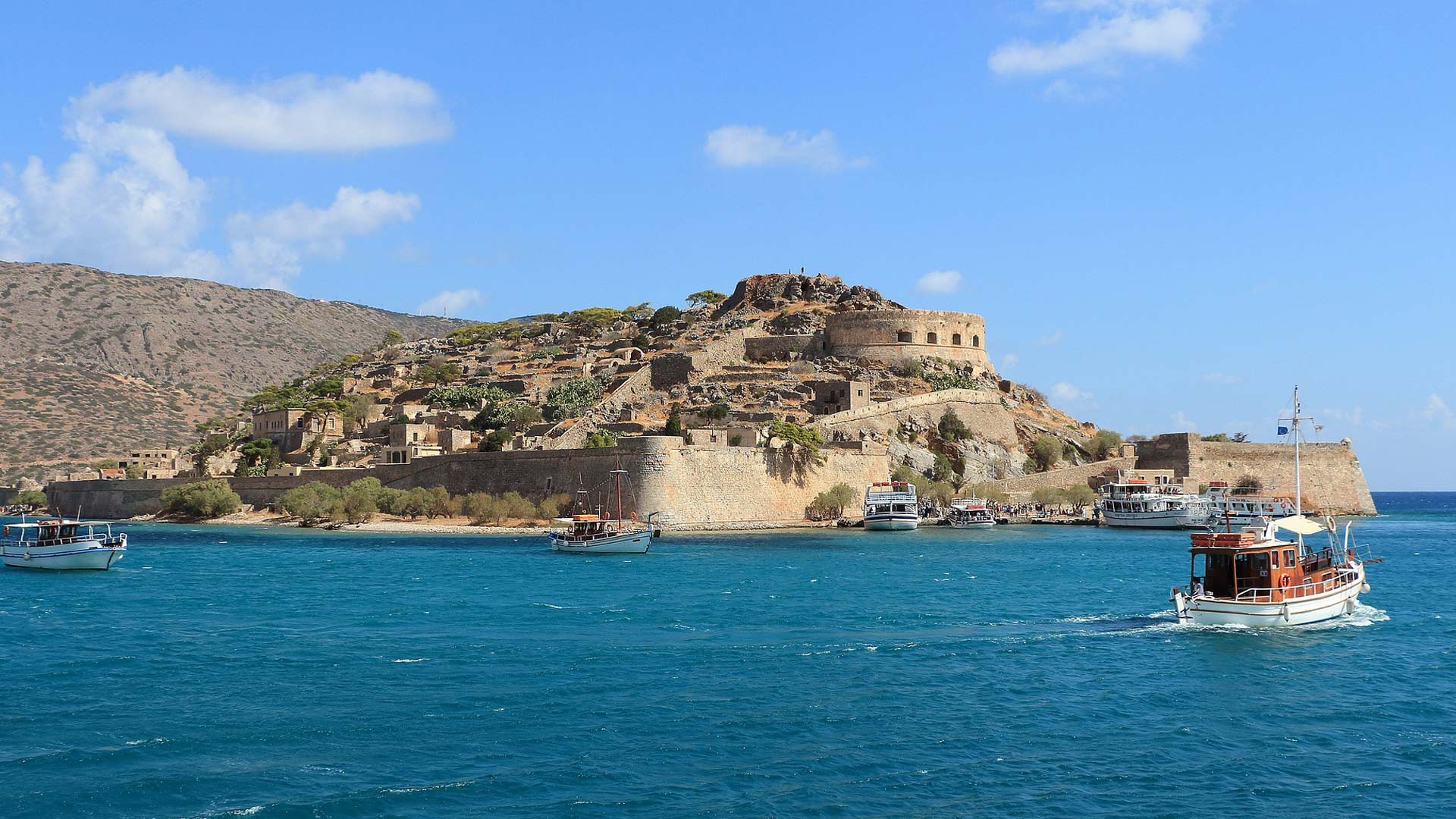There are organised one to two day trips to the unique volcanic neighbour island with Black sand beaches formed out of lava and Cycladic architecture, with panoramic view of the Aegean Sea from the traditional neighbourhoods of white buildings,taverns and windmills.The island was the site of one of the largest volcanic eruptions in recorded history: the Minoan eruption, which occurred about 3,600 years ago at the height of the Minoan civilization. The eruption left a large caldera surrounded by volcanic ash deposits hundreds of metres deep. Its huge magnitude led to the collapse of the Minoan civilization on the island of Crete, 110 km (68 mi) to the south, through a gigantic tsunami, while volcanic rocks exist even today on Crete’s coast. Another popular theory holds that the Thera eruption is the source of the legend of Atlantis.It is also famous for one of the worlds most fascinating sunset and the gathering at the village of Oia, the best view point for it, where people meet to watch it and celebrate.
A Museum focused on the Minoan civilization which started to thrive at 2700 B.C. to 1450 B.C. where it was destroyed by the volcanic eruption of the Santorini volcano. The exhibits mainly belong to Knossos and Phaistos which were the two biggest and most evolved cities of that period. The Heraklion Archaeological Museum is one of the largest and most important museums in Greece, and among the most important museums in Europe. It houses representative artifacts from all the periods of Cretan prehistory and history, covering a chronological span of over 5,500 years from the Neolithic period to Roman times. The singularly important Minoan collection contains unique examples of Minoan art, many of them true masterpieces. The Heraklion Museum is rightly considered as the museum of Minoan culture par excellence worldwide.
Knossos is the largest Bronze Age archaeological site on Crete and has been called Europe's oldest city.
The remainings of the palace of King Minos and the real size maze where it was rumored that the son of the king, the Minotaur was living in still lie not far outside Heraklion. The Minoan civilization has been described as the earliest of its kind in Europe staring at about 2700 B.C., historian Will Durant called the Minoans "the first link in the European chain. It's definitely worth to devote some time to the astonishing facts you will hear from the guide.
Apart of its art and Mediterranean structures the Minoans had founded sophisticated engineering with examples of water managements (drainage of supply and waste runoff) and ventilation air shafts that maneuvered the chilly summer breezes from the sea around the palace.
Preveli (64km)
The palm forest alongside a river that ends in the sea is one of the biggest palm forests in Europe. Being only about one hour away by car or bus, Preveli is a charming place for hiking along its river and between the palms. After, the refreshing waters of the beach with the chilly waters half salty half sweet, delivered by the river will offer you relaxation, a place to sunbathe and a little taverna to still your needs, on top of the astonishing natural and untouched beauty of the place.
Balos Beach (140km)
The famous Balos beach lies in front of a lagoon which is shaped between a small island and the coast of Crete. There is an islet which forms part of a cape, through the lagoon, called Cape Tigani (which means "frying pan" in Greek). While north of Balos, at the Korykon cape, are the ruins of the small ancient Roman city of Agnion, with a temple to the god Apollo.
Elafonissi Beach (162km)
A Unique beach you have to visit at least once, known for its rose sand from the ground shells through the years and its extraordinary crystal clear turquoise waters.In front of it the island of Elafonissi is located where it is possible to walk to, through the shallow water. The island is a protected nature reserve. This magnificent spot of Crete is perfect to shoot some amazing summer pictures and witness the magic sundown.
Vai Palm Beach (130km)
An exotic sandy beach with whitish sand is formed near the shore, backed by the edenic palm forest, reminding of African and Caribbean seascapes. A wonderful place to spend a day to sunbathe, swim and see an exotic place. The entire region is owned by the powerful Toplou Monastery, which is the largest landowner in eastern Crete. The 15th-century monastery is built like a fortress, and hosts a great collection of Byzantine icons.
Monastery of St. John Atali in Bali (4km)
The huge garden surrounding the Monastery with its amazing smells and a view of the Bali bay and parallel having a glimpse at the traditional orthodox religion, the St. John Monastery is a place not far from you and totally worth visiting and enjoy its calmness.
Monastery of Arkadi (32km)
The Monastery of arkadi was sieged by the Ottoman Turks during the revolution in 1866 with 943 Greeks inclosed. The visible influences of the architecture feature mixes of both Roman and Baroque elements. As early as the 16th century, the monastery was a place for science and art and had a school and a rich library. Situated on a plateau, the monastery is well fortified, being surrounded by a thick and high wall.
Monastery of Preveli (60km)
The monastery was probably founded in the Middle Ages, during the occupation of Crete by the Republic of Venice, its founder being a feudal lord named Prevelis. It developed over several centuries as a religious and cultural centre for the local population. After the Ottoman Turkish occupation of the island, Abbot Melchissedek Tsouderos led a group of rebels in the Greek War of Independence in 1821, one result of which was that the monastery was destroyed, but later rebuilt. In 1866 and 1878, the monastery was again active in organising rebellions against the Turks, which helped contribute to Crete's eventual independence and then its political union with Greece.
The gorge of Samaria (131km)
There are certain epic hikes throughout the world, and the hike through Samaria Gorge National Park is one of them. What makes Samaria Gorge so unique? With 16 kilometers, Samaria Gorge is one of the longest gorges in Europe and not considered with an easy difficulty,it is located in Crete’s only national park, and provides stunning views all day long. Alongside the fascinating terrain there is a big flora variety like the dragon arum, marjoram, anemones, white asphodels, yellow phlomis, and irises. Dragon arum flowers look like something from the Jurassic period, large and deep reddish-purple. Worth mentioning are also the little churches and remnants of villages along the way. Be sure to take a peek into the open churches. The hike ends at a beach with some nice tavernas that will take care of you after the 6-7 hours of exploring the wild and fascinating terrain of the cretan highland.
The gorge of Imbros (80km)
Imbros Gorge is located in province Sfakia and is the third most visited gorge in Crete, following Samaria Gorge and Agia Irini by Sougia, all belonging to the E4 European hiking path. The scenery is beautiful and the low difficulty make the descent of Imbros ideal for families with children, couples or a group of friends. The length of the gorge is 8 km and the course lasts 2-3 hours. In many parts of the gorge we meet traces of the old stone paved trail that was once the main passage from Sfakia to Chania. Therefore, the canyon was a theatre of several battles between the Ottomans and the Christians during the Turkish Occupation of Crete, especially in 1821 and 1867. Initially the course is descending and the sidewalls are relatively low. But while descending, the canyon narrows continuously, the sidewalls raise higher and the side walls start approaching, the scenery gets very impressive.You will see various caves, while the vegetation consists of old cypresses, oaks and maples popping up through the rocks.
The gorge of Agios Antonios (48km)
The gorge of Patsos or Agios Antonios is located 8 km southwest of the Monastery of Arkadi, in the heart of the lush province of Amari. The water of the gorge ends up in the the dam of Potamoi. Trekking in the gorge is very easy, since there are paths leading the way.The gorge is ideal for picnic, with a spring of running water near the river. You can also taste the exceptional meals at the traditional greek taverna of Drymos near the beginning of the gorge. A beautiful attraction of the gorge is the cavernous church of St. Anthony in the rocky walls, a former temple of Hermes. From there you can follow the trail towards Potami dam or till the beautiful cavernous waterfall and then return back. On the sides of the gorge there is an observation deck for birds in the area.
The cave of Melidoni (14km)
The cave is about 1,800 metres northwest of the village and is of interest not only because of it’s huge stalactites and stalagmites but also the archaeological findings and its history going millennials back. The cave was the mythical home of Talos, the giant protector of Crete who used to circle Crete twice a day, warding off its enemies.The Legend says that the sorceress Medea removed his protective thorn and he bled to death. Melidoni was the site of a sanctuary dedicated to Hermes Talaios during the Classical Greek period.The cave is also associated with a tragic historical event that occurred during the Turkish occupation. Three hundred and forty men, women, and children sought refuge in it and refused to surrender. The Turks lit a fire at the cave's entrance and all the people inside were asphyxiated. There is a plaque commemorating these lives lost in 1824 along with a communal tomb in the cave.
The Olive oil mill in Melidoni (14km)
Get in touch with the process the liquid gold of Crete is made known for its countless health benefits and exceptional taste. Get in touch with the technique and the cold extraction method which produces the highest quality of its kind without destroying the volatile aromas and healthy enzymes but therefore complicate its extraction.
Lyrarakis wine Farm (73km)
It is one of the best wine farms of our island where Prince Charles of Wales visited in 2018. The Lyrarakis Estate is a family winery which has been producing high quality wines since 1996 with a strong focus on rare local varieties. Surrounded by the picturesque setting of the vineyards and the Lassithi mountains the opportunity is offered to enjoy nature and discover local varieties and wines distinguished by the uniqueness of their origin and heritage.
Museum of Eleftherna (32km)
The Museum displays exhibits from the site of Eleutherna (Ἐλεύθερνα), a city-state in which flourished from the Greek Dark Ages until Byzantine times.The exhibits presented are of the period of 3000 BC to 1300 AD and include pieces of art and everyday life from Prehistoric, Geometric, Archaic, Classical, Hellenistic, Roman and Byzantine eras.
The Margarites village and its pottery producers (24km)
The craftsmen still use traditional techniques and skills, whether for small pieces of pottery or the large storage jars used on the island in the Minoan period, as evidenced by the large jars found in all Minoan sights. Among the huge collections you will find fascinating pieces of art which you can also buy or just admire.
The splendid island of Spinalonga (123km)
Originally, Spinalonga was not an island. It was part of the island of Crete. During Venetian occupation the island was carved out of the coast for defence purposes and a fort was built there.During Venetian rule, salt was harvested from salt pans around the island. It is a place for hiking, go for a swim at the beaches around it, explore the old village on it and check out Elounda and its elegant bars and restaurants at the coast of Crete near by Spinalonga.
Lasithi (107km)
The Lassithi Plateau, one of the most picturesque villages in Lassithi, is one of the best places to introduce yourself to local tradition and adapt to the slow rhythm of the island. A drive around Lassithi will bring you to archaeological sites, Medieval Castles and caves. There is also the fascinating Psychro Cave, where according to the myth Zeus, father of the greek god was born.
Aqua Plus water park (75km)
Entertainment and fun for young and old offers the waterpark in hersonissos with its many water slides. The park is perfect for adrenaline lovers as there are some pretty extreme routes but also calmer ones for kids and a slow river to relax on your floating ring. Sunbeds are free and the taverna will take care of your hunger and need of a refreshing drink.
Hersonissos Golf Club
As one of the biggest golf clubs in Greece with its 18 holes of international standard the Hersonissos Golf Club is definitely going to succeed in entertaining you if you enjoy or want to experience golfing.
asdasdsada

